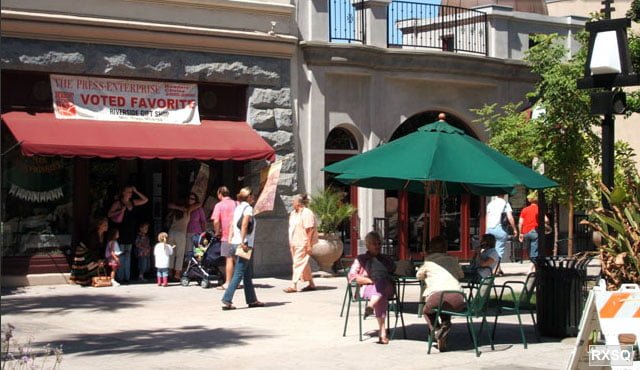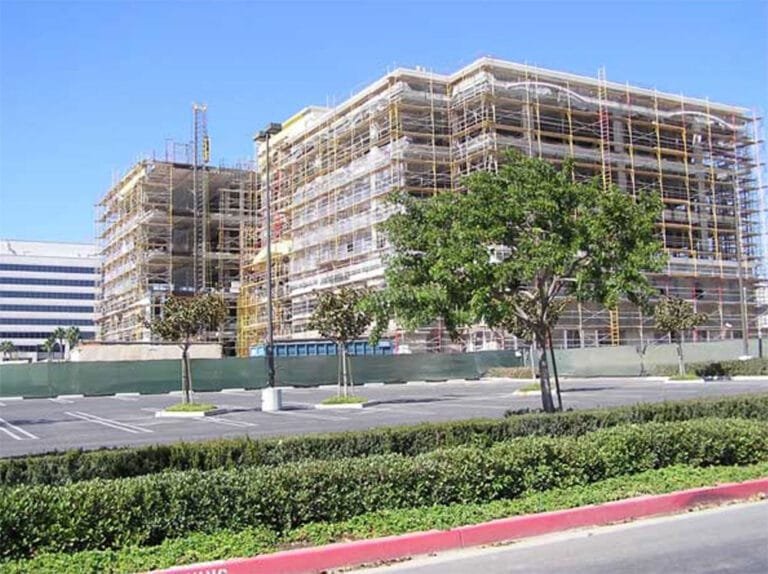The future? More vertical, more density — less housing tracts
After decades of nearly unfettered sprawl, the time has come to seriously begin changing the basic developmental patterns of Inland Southern California.
Gone should be the days of leap-frogging, low-density development. In its place, should come more balance, both in densities and in types. More mid- and high-rise development coupled with higher percentage of business and commercial projects (and less residential — specifically, less tract housing).
As previously mentioned (one | two), we’re not suggesting New York City style mega-density, but pockets of moderate densities — particularly in downtown Riverside, downtown San Bernardino, and near Ontario Airport — similar to those found within the downtowns of Pasadena, Glendale, Santa Monica and Long Beach.
If the recent recession has demonstrated any major weakness within Inland Southern California, it’s the region’s lack of commercial maturity and continued reliance upon warehousing and residential development as its primary form of economic growth. Not only has such dependence created an unbalanced (and unreliable) economic engine, it’s left the region with an unbalanced (and wasteful) landscape, one dominated by sprawling development and ever-growing commutes.
Quite simply, area residents, builders and government officials alike must begin accepting — and more importantly, insisting — on better quality, higher density, more diverse development patterns focused more around jobs and less on housing tracts. Moreover, such future development needs to be coupled with — and encourage — alternative transportation, else this region will remain a land of nightmarish commutes.
However, amid the hardships of the current economic downturn lies a silver lining. Or better yet, think of it as a golden opportunity. A chance for Inland Southern California to catch its breath, re-focus and begin adding balance back to the region’s landscape. Fortunately, a smattering of projects, both built and proposed (some of which are stalled due to the current economic climate) may signal change is afoot. But just as it took several decades to get to where we are today, it will likely take several to re-balance. But without a doubt, the transformation needs to begin sooner rather than later.
Thus, the question remains — will we take advantage of the current slowdown to begin addressing and planning for the region’s long-term, sustainable economic and lifestyle needs? We think the clear answer is — can we afford not to?
Previous
- RaincrossSquare.com – Growth as usual? (Aug. 2007) | Time to grow up (July 2007)







Bravo, as usual… I think this is what the City of Riverside’s Planning Division was at least getting at with the General Plan 2025 program, although I feel the document lacks the scale and the ambition to really achieve a smarter, denser, cleaner, more appropriately urban Riverside. And I think that’s due largely in part to the need for a public agency like the CDD to make concessions to the typical auto-dependent suburbanites that make up so much of Riverside’s most vocal portion of the population.
But it’s a step, no doubt.
(Pub: Jun 14, 2009)
… the need for a public agency like the CDD to make concessions to the typical auto-dependent suburbanites that make up so much of Riverside’s most vocal portion of the population.
Likely so. Our hope is this notion of “sprawl is better” is finally beginning to change locally, even if only on a modest level. No doubt this region will remain predominantly suburban for years to come, thus, concerned folks need not worry too much about sudden, overnight changes in densities. But the process of bringing balance — and choice — back to the area’s residential and commercial landscape needs to begin now.